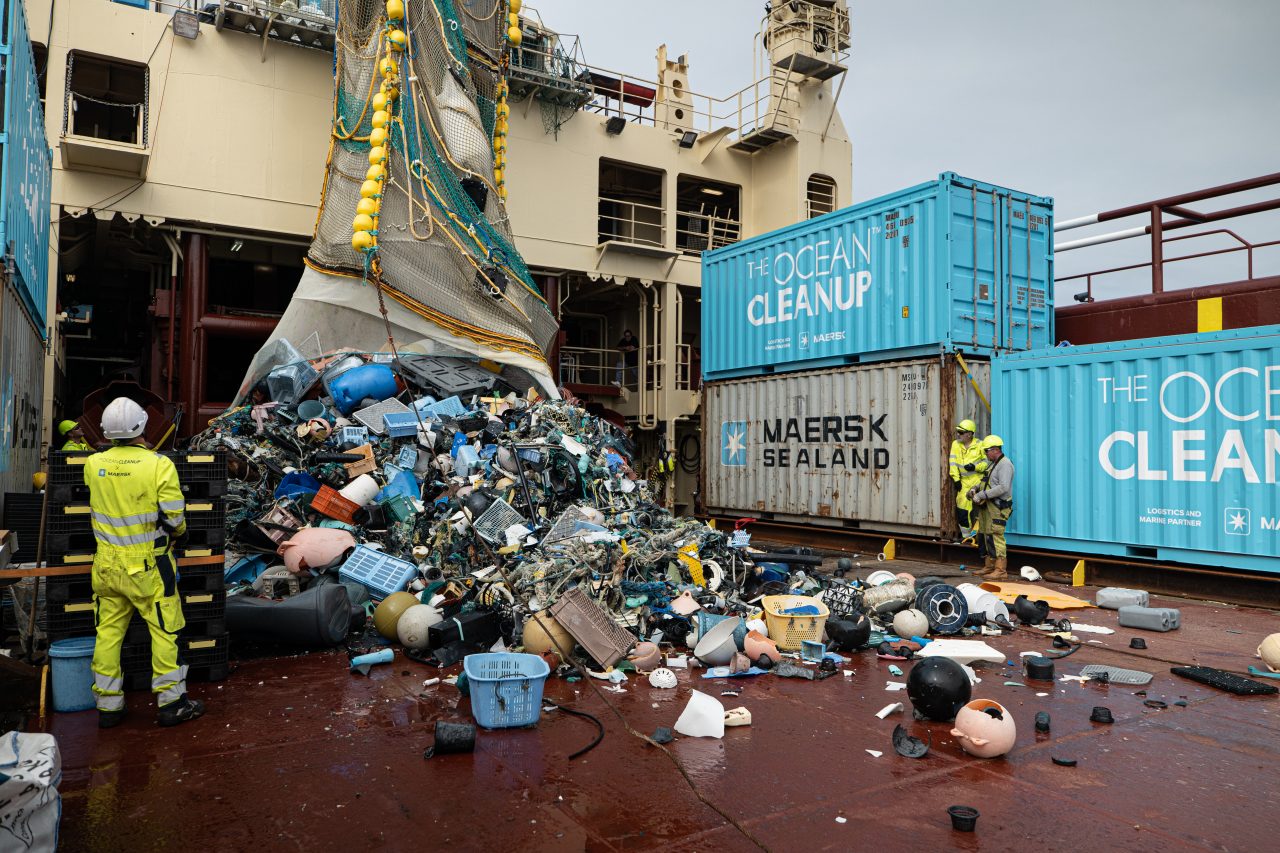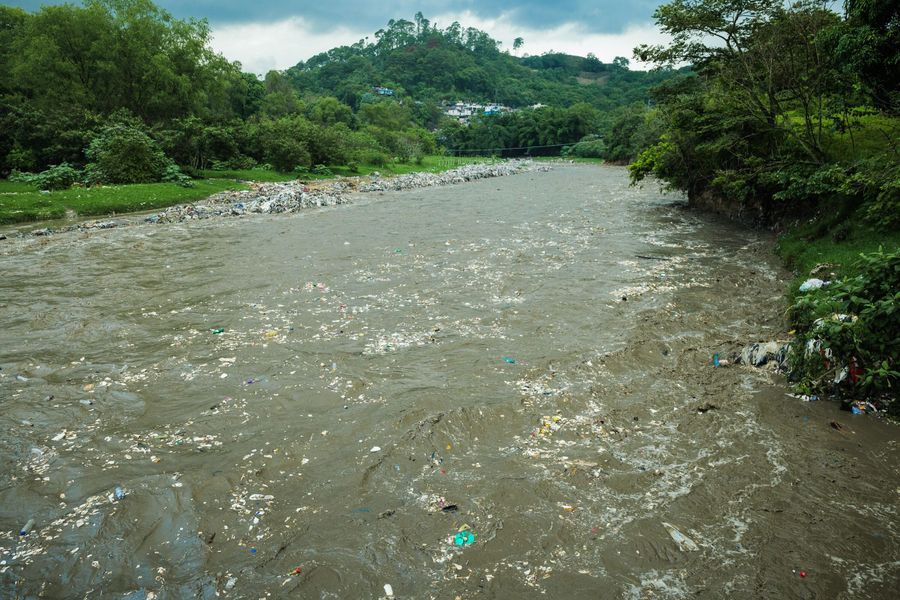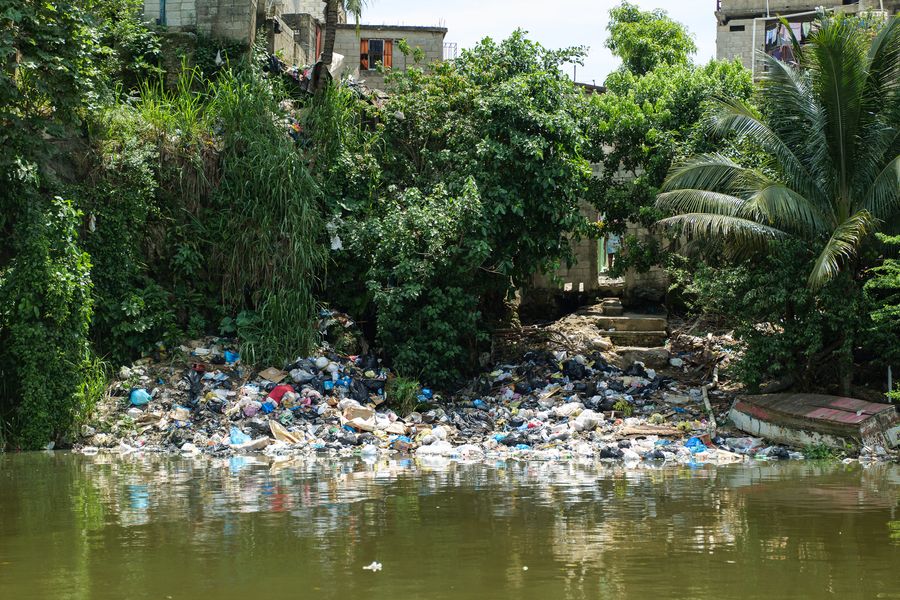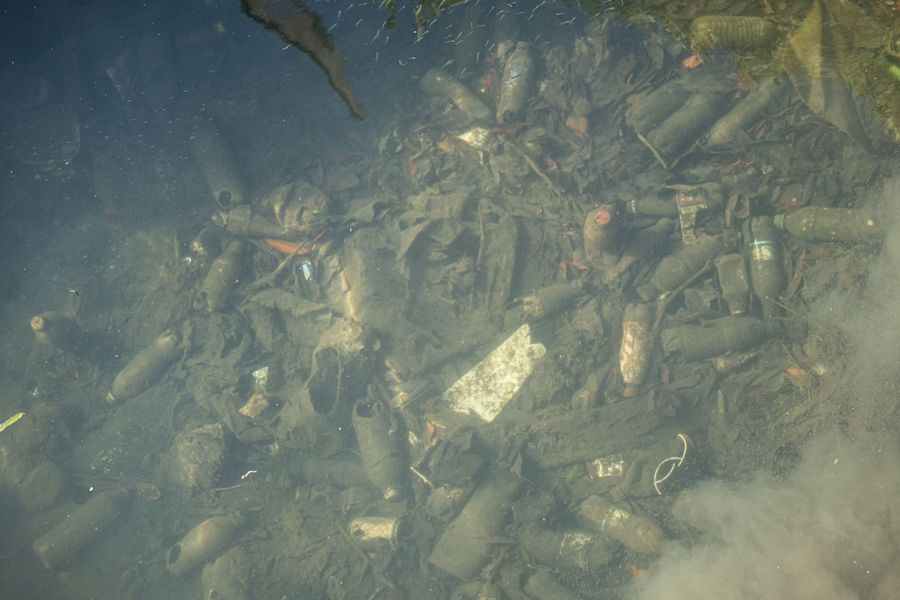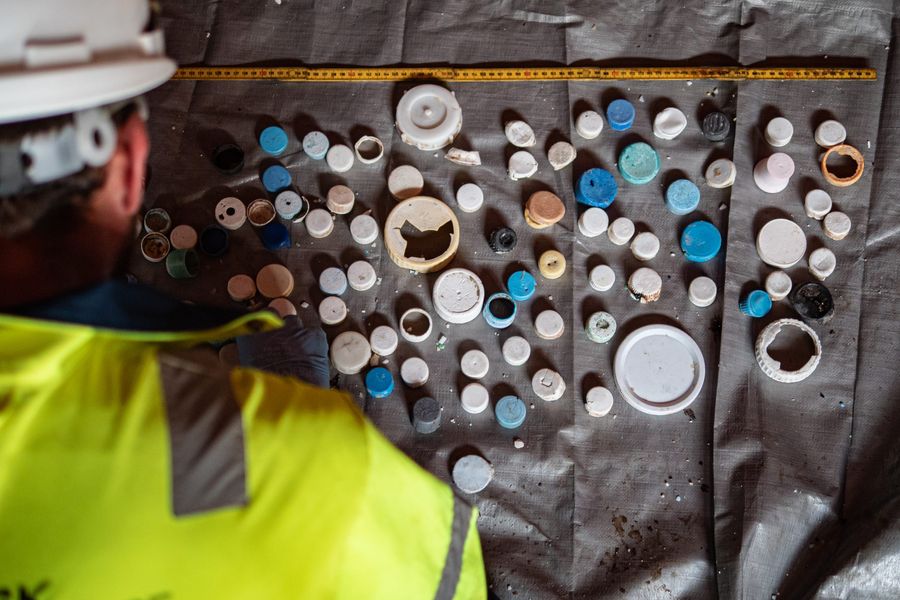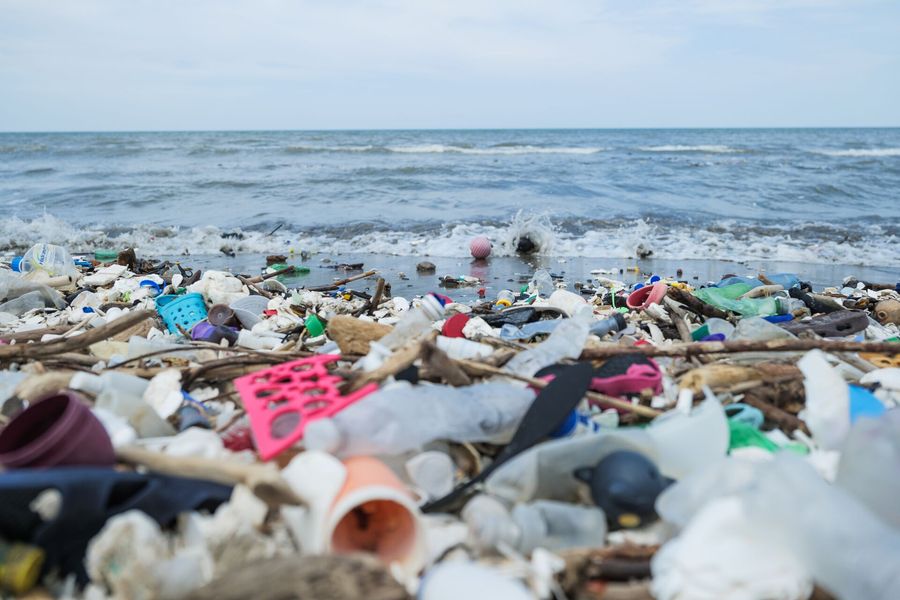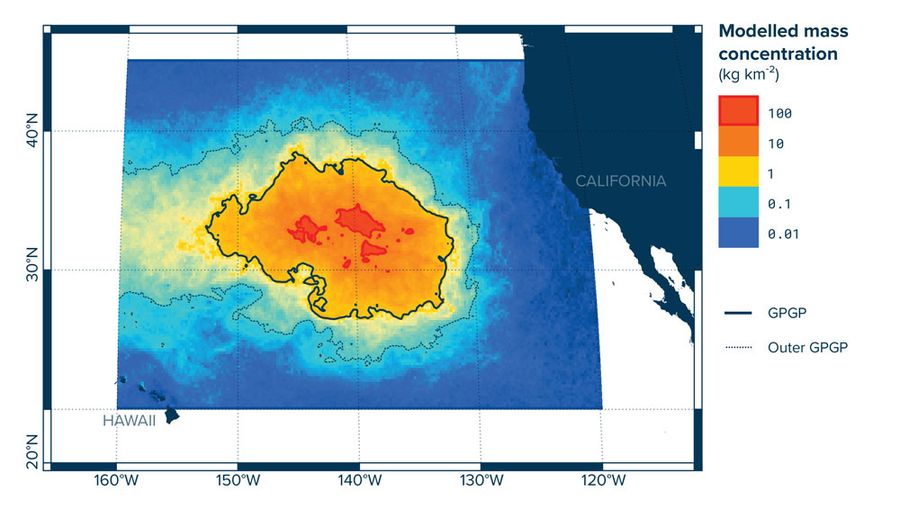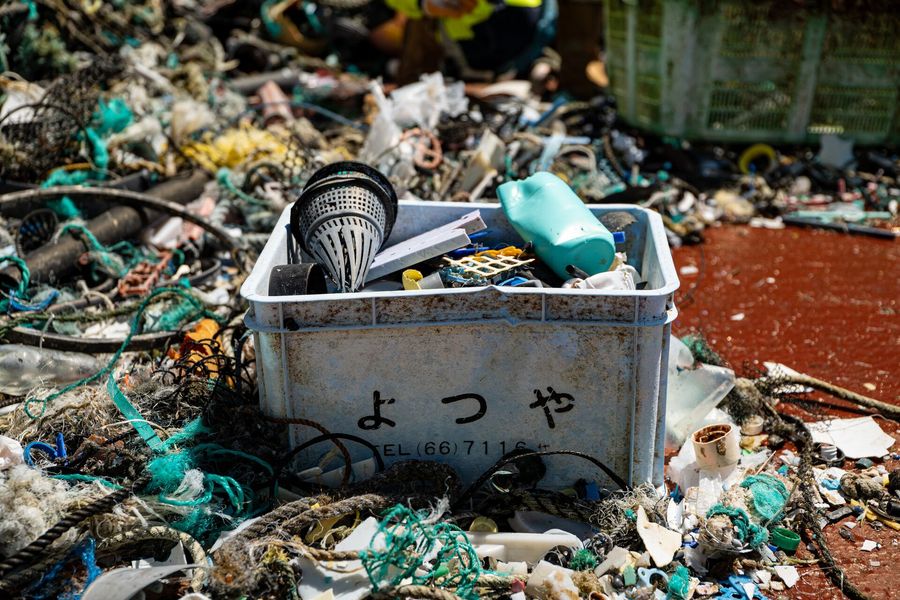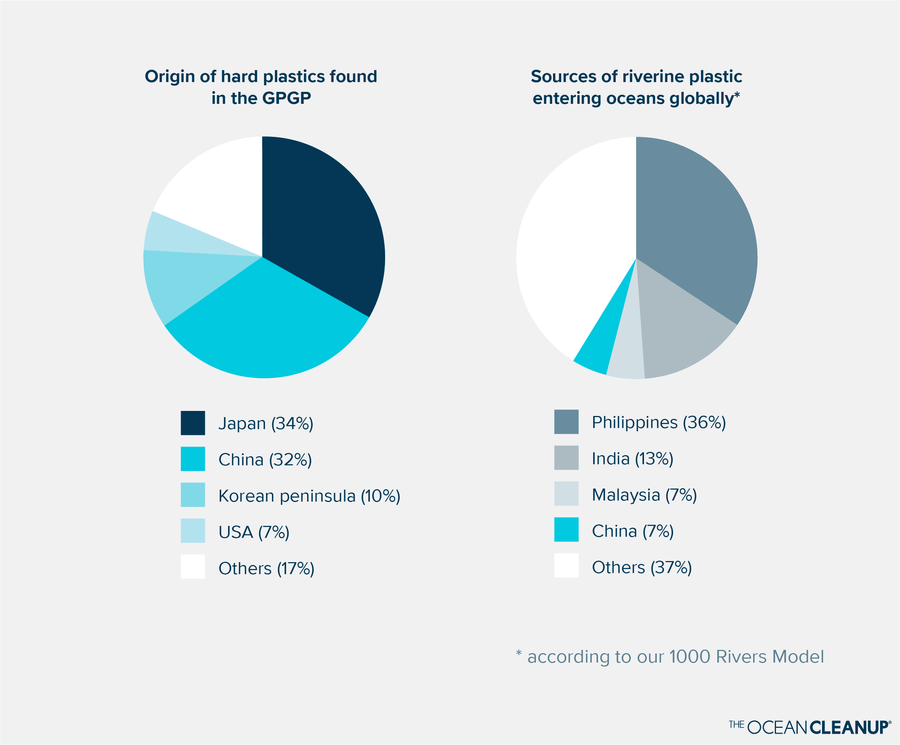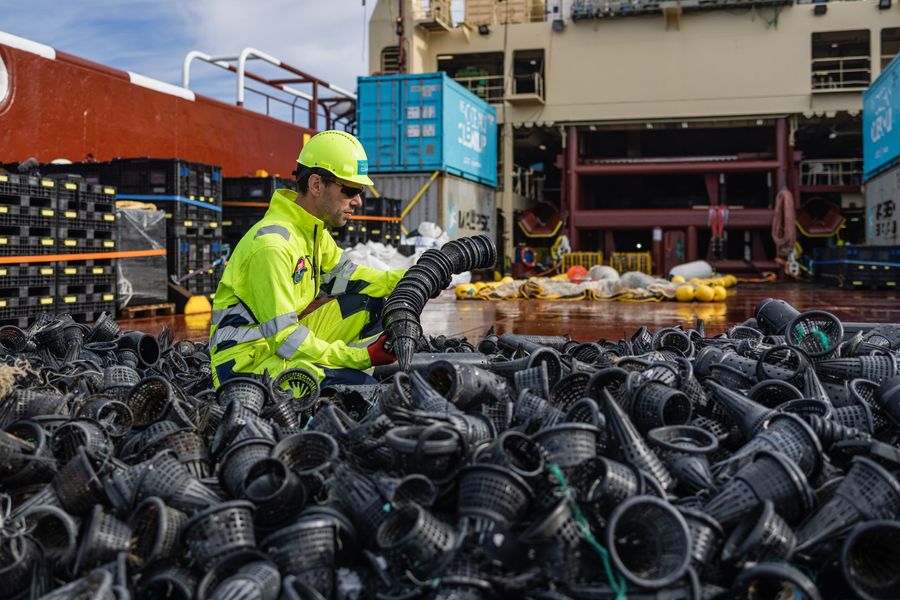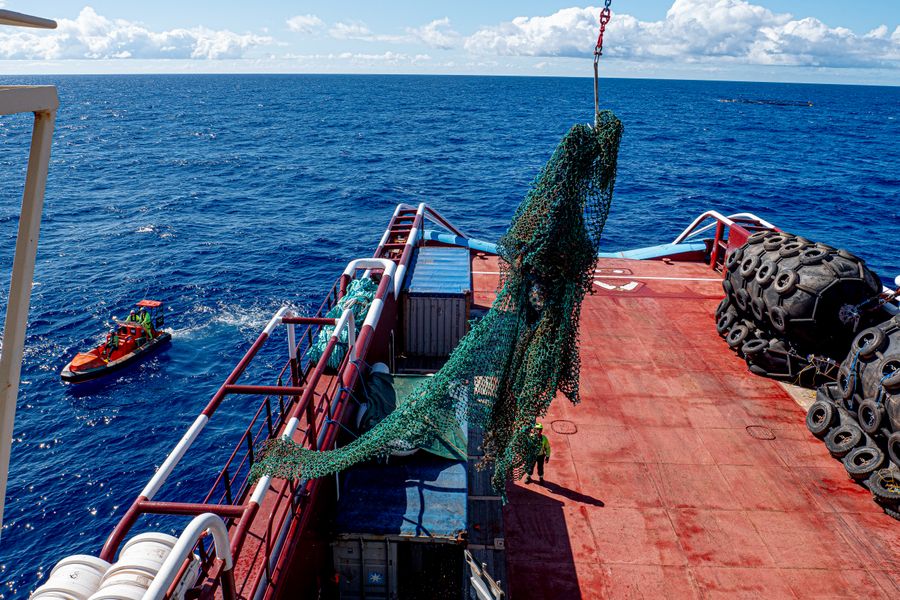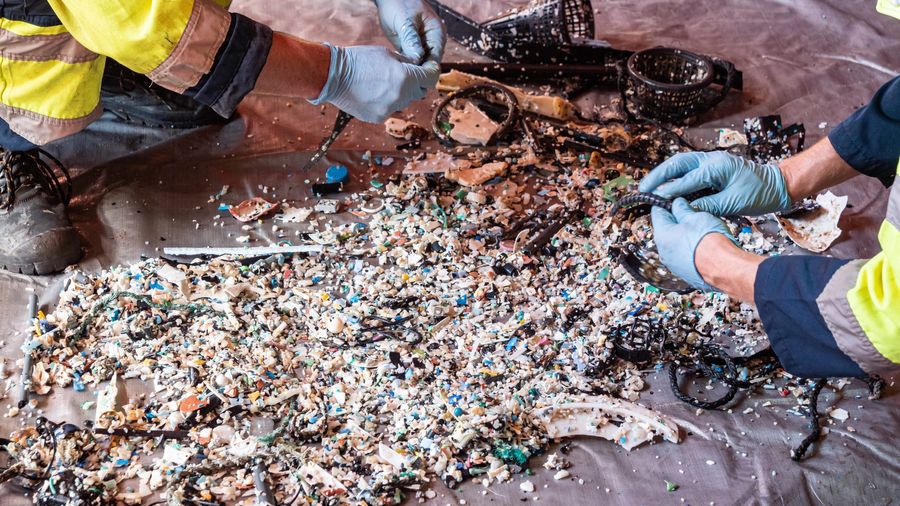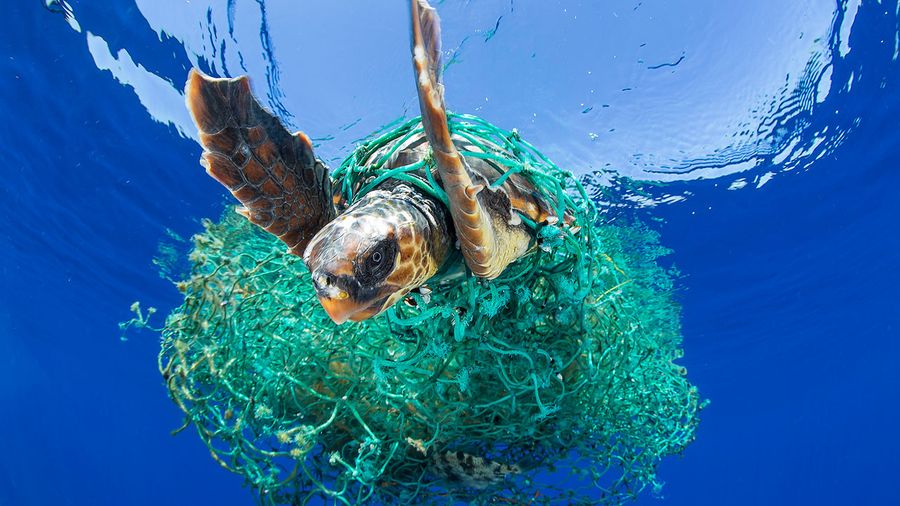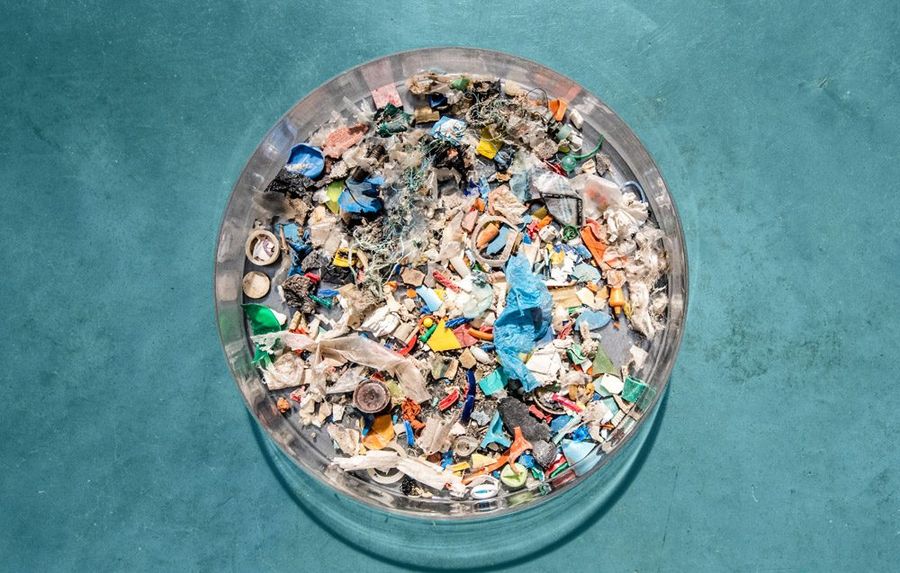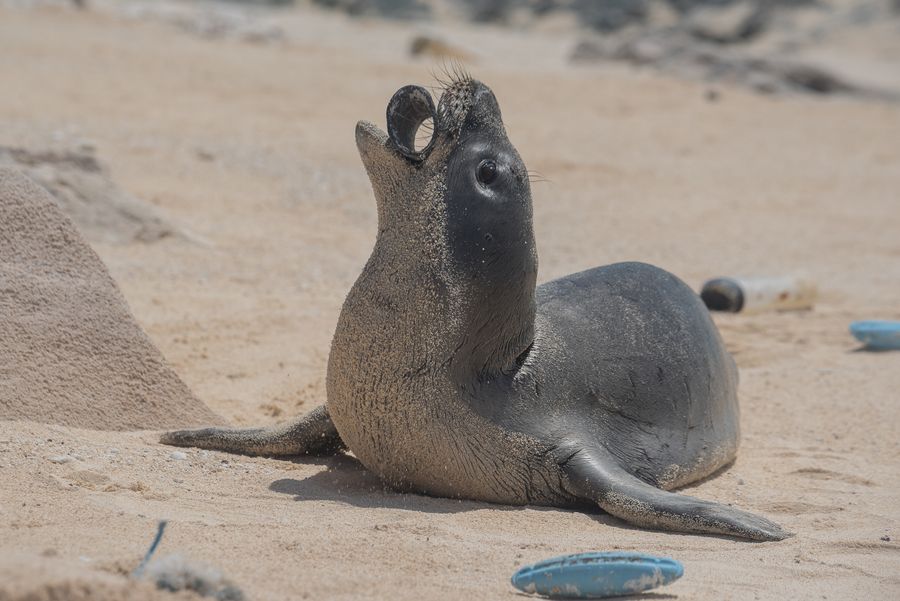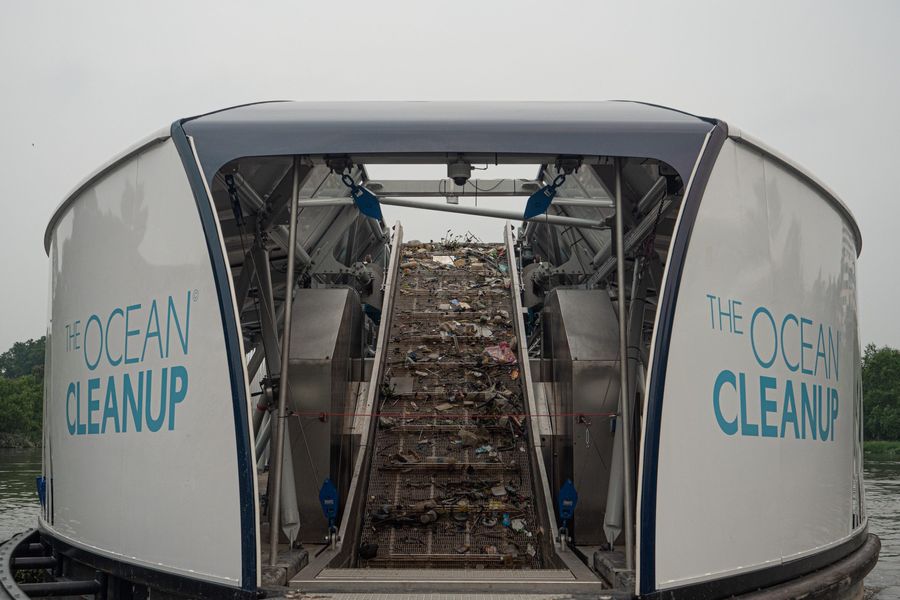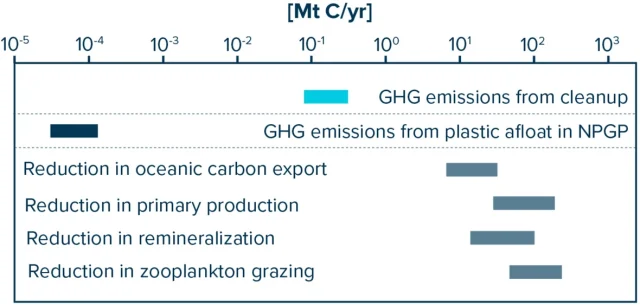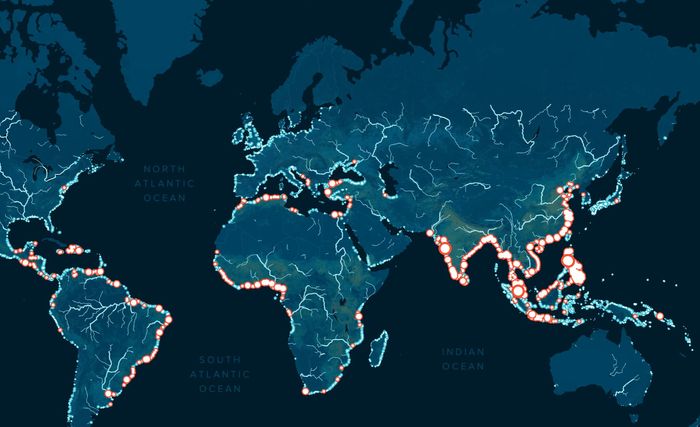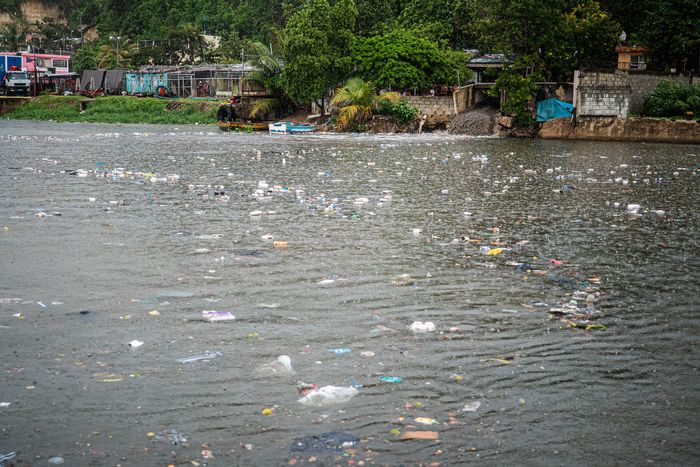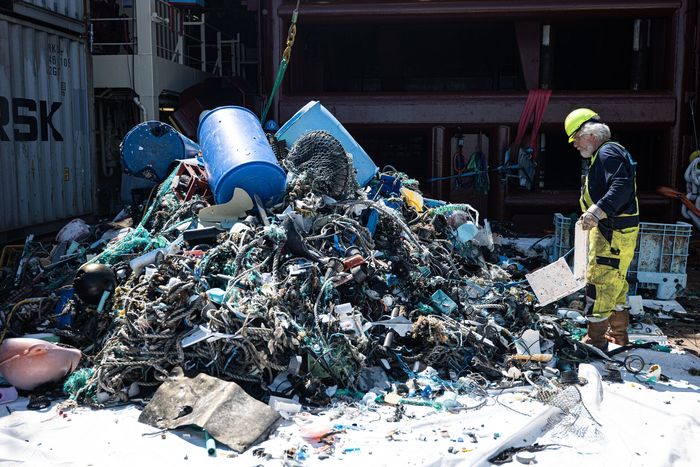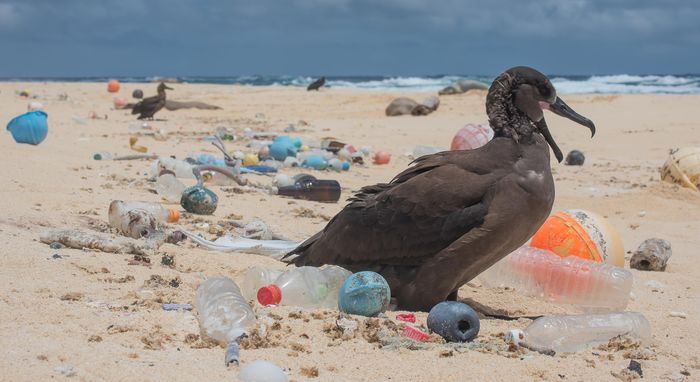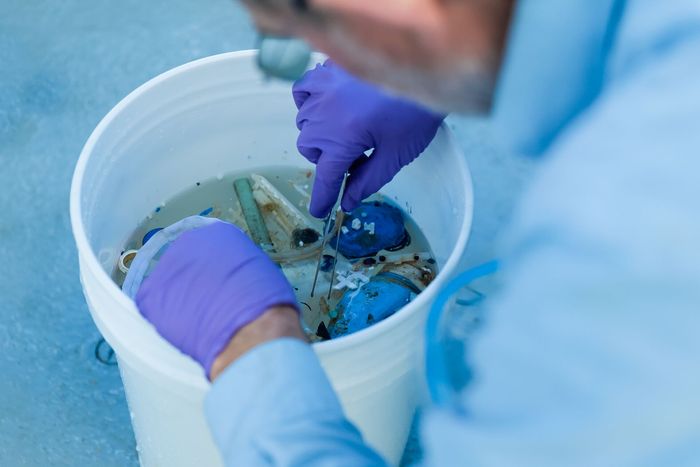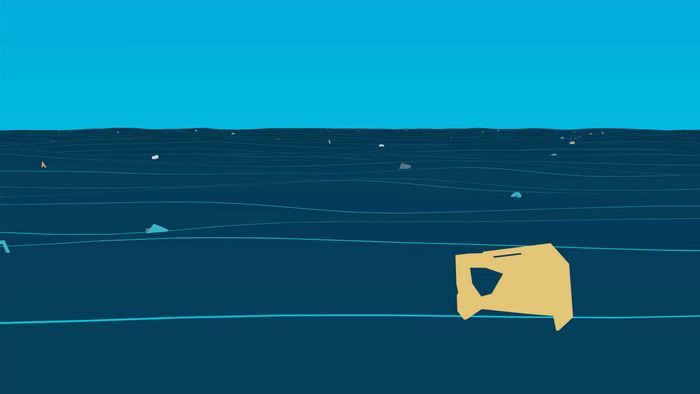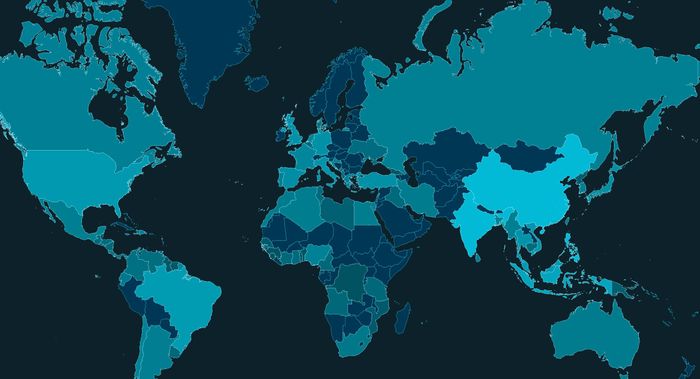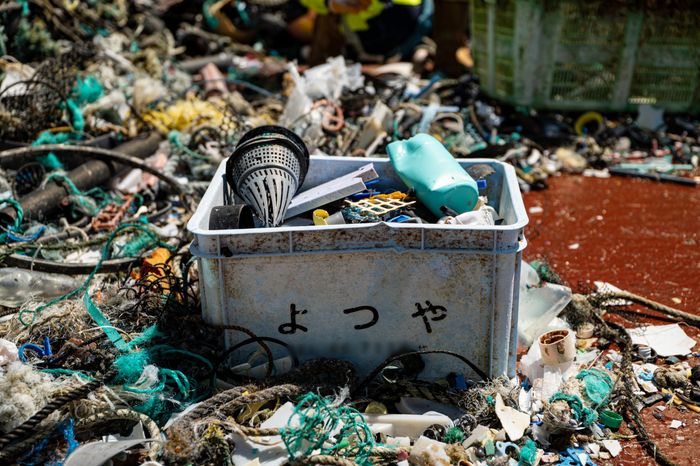
Ocean plastic pollution explained
How much plastic enters the ocean?
Plastic leaks into the ocean from thousands of sources all over the world every day. Increasing consumption combined with improper waste management in many countries has made plastic pollution a worldwide problem, causing damage not only to the environment but also to human health and economies.
Humans produce over 400 million metric tons of plastic annually. That’s roughly the weight of all humans on the planet — and plastic production is projected to keep going up.
So of this 400 million tons that gets produced each year – how much actually ends up in the ocean? Less than 0.5 percent .
This is because only a small proportion of plastic is disposed of incorrectly, and an even smaller part of that enters waterways. This does not mean the ocean plastic pollution problem is “small” – over 1 million metric tons is still a massive amount of pollution.
So how does plastic become ocean plastic, and what factors can influence it? Let’s dig deeper.
How does plastic enter the ocean?
Plastic usage and waste management infrastructures differ all over the world. Only 9% gets recycled, and about 22% of plastic waste worldwide is either not collected, improperly disposed of, or ends up as litter.
People in high income countries consume the most plastic, but the waste management systems there are usually effective – meaning that even though there’s a lot of plastic around, it is mostly kept out of the natural environment. Meanwhile, lower income countries often consume less plastic, meaning emissions from these countries remain low even if the local waste management infrastructure is lacking.
Most plastic emissions come from middle-income countries, where plastic usage is growing, but a lack of adequate waste management systems presents challenges in dealing with the increase in consumption.
During storms and other heavy rain events, plastic emissions can increase as much as tenfold as trash is washed into waterways. Rivers are the arteries that carry plastic from land to sea — but not every piece of plastic in a river will end up in the ocean. Many objects sink to the riverbed or get stuck somewhere along the river system.
The closer the plastic is to a river, and the closer that river is to the ocean, the greater the chances that the plastic will reach the ocean.
Therefore, coastal cities in middle-income countries are the world’s plastic emissions hotspots. All these factors taken into account led to our study from 2021 identifying 1000 rivers worldwide representing almost 80% of ocean plastic emissions.
Where does plastic pollution go?
MOST PLASTIC EITHER SINKS OR BEACHES WITHIN A MONTH
Nearly half of the plastic sinks directly because of its low buoyancy. Of the other half which floats, our research shows most of it doesn’t go far out in the ocean — about 80% of floating plastic will beach on a coastline within a month of leaking into the ocean. Some objects may be washed out to sea again, but coastlines are the final resting place for most floating ocean plastic. This can have serious consequences for the coastal environment and the fishing and tourism industries, as well as high cleanup costs for coastal communities.
If we take a PET bottle as an example; it is likely to sink as it fills up with water, but the cap, which is made of different type of plastic (HDPE), will stay afloat for much longer. High-density polyethylene (HDPE) products are most likely to travel long distances.
TRAPPED IN THE GYRES
It can take years for a plastic piece to break free from these coastal waters and be carried out to the open ocean – but once it’s out there, it can stay there for a long time.
Plastic accumulates in huge subtropical oceanic areas called gyres – massive circular currents that trap the floating plastic for decades, if not centuries.
There are five gyres in our oceans. The most polluted – and best-studied – is the infamous Great Pacific Garbage Patch, located in the North Pacific Ocean, between Hawaii and California.
The Great Pacific Garbage Patch is estimated to be twice the size of Texas – that’s triple the size of France or Thailand. However, the garbage patch is not a solid island of trash, a common misconception — it’s more often compared to a plastic soup.
Around 100 million kilograms of plastic float in the Great Pacific Garbage Patch, which contains 1.8 trillion pieces larger than 0.5 mm. That is about 160 pieces per person living on the planet. About 92% of the floating plastic mass in the Great Pacific Garbage Patch consists of larger objects. Only about 8% of the mass is microplastics. However, these larger objects are continually fragmenting into smaller pieces, which are much harder to clean up; the longer the problem exists, the worse it gets.
Other sources of plastic pollution
FISHING WASTE
Rivers are the main source of ocean plastic pollution, but there is another major source of plastic in the Great Pacific Garbage Patch — fishing gear. Where most plastic in coastal waters comes from land-based sources, the Great Pacific Garbage Patch is different. In fact, our research shows that about 80% of the plastic in the GPGP comes from fishing activities at sea.
Fishing equipment lost or dumped at sea has a much higher chance of accumulating offshore because it is emitted far from coastlines (making it less likely to naturally return to shore), and because fishing gear is designed to survive in the water for long periods.
MICROPLASTIC SOURCES
When talking about microplastics, it is helpful to differentiate between primary and secondary microplastics. Primary microplastics, such as nurdles and cosmetic microbeads , are produced in that size. Secondary microplastics come from the degradation of larger objects. Two major sources of secondary microplastic from/on land are vehicle tires and synthetic clothing.
Microplastics are much more difficult to clean up, and because of their small size, their bioavailability increases, meaning they can potentially impact more species than larger objects. The Ocean Cleanup removes plastic objects from the ocean while they are still at a larger ‘macroplastic’ size, to prevent these objects from breaking into smaller pieces and eventually forming microplastics.
What is the impact of plastic pollution?
WILDLIFE
Marine wildlife suffers the most direct and damaging effects of ocean plastic pollution. From all kinds of fish to turtles, seals, crustaceans, micro-organisms and many other forms of life, the damage caused by plastic pollution to marine animals is increasingly visible as we learn more about this problem.
One of plastic’s biggest assets as a material is its durability. However, this means that once plastic enters the ocean, it will persist there for long periods; it won’t go away by itself. The oldest pieces we have found in our cleanup catches date back to the 1960s — and during this whole period, marine life is bearing the consequences.
Entanglement and ingestion have been found to impact 914 megafaunal species, of which more than 100 are endangered. As an example, the Mediterranean monk seal’s (Monachus monachus) second leading cause of death (after deliberate killing) is fishing gear entanglement. Our researchers have spotted whales in the Great Pacific Garbage Patch, indicating they are exposed to and affected by high quantities of plastic pollution. The Great Pacific Garbage Patch has 180 times more plastic than biomass, indicating that plastic could be a primary food source for organisms in this region.
A DELICATE ECOSYSTEM
Any marine ecosystem is finely balanced, and any change to that balance can seriously impact the inhabitants. Floating plastic debris can allow species such as coastal organisms to spread far from their usual environments and thrive in the open ocean – upsetting the balance in the GPGP. This can be damaging to marine life naturally occurring in ocean garbage patches, such as neuston .
Some plastic not only contains harmful additives and chemicals but also acts as magnets for toxins from the surrounding air or water, so the longer a piece of plastic is out there, the more harmful it can become to any animal that ingests it.
Degradation is slow but constant, so the larger objects are a ticking time bomb, breaking down over time and raising levels of microplastics exponentially. Smaller objects impact and travel up the food chain — a food chain that ends with us humans.
OXYGEN AND CARBON
Research on Prochlorococcus, an abundant bacteria/phytoplankton in the ocean that produces oxygen, has shown that leaking toxins from plastic negatively affects their oxygen production and their reproduction.
Oceans not only produce oxygen , but also pump carbon down to the seabed. Zooplankton found ingesting microplastic consumed 40% less carbon biomass. The fecal pellets of zooplankton also sink at a lower rate when consuming significant doses of microplastic, which also may have an impact on the carbon pump.
HUMAN HEALTH
Microplastic is all around us — in our seafood, tap water, and salt, to name a few sources. Studies indicate that plastic can pass through the blood-brain barrier in mice as quickly as 2 hours after consumption. Research has found that it potentially poses acute and (sub) chronic toxicity, carcinogenicity, and developmental toxicity.
However, the long-term effects on our health are not yet fully understood, and given how omnipresent it is, it is hard to isolate its full effects.
ECONOMIES
It is estimated that marine ecosystems provide benefits of up to $50 trillion per year through their ecosystem services (Constanza et al., 2014). Plastic pollution is estimated to reduce the value of these ecosystem services by $500 to $2500 billion per year (Beaumont et al., 2019).
Derelict fishing gear also poses a safety risk to vessels at sea if they get stuck in propellers, which we also experienced firsthand.
What is being done about plastic pollution?
Plastic pollution is a global problem that requires a global response. Efforts to address plastic pollution on a systemic level are fragmented. Thankfully, the momentum for international cooperation to address the plastic crisis has increased over the past year. In particular, marine litter and microplastics have been on the agenda of the UN Environment Assembly for several years. On March 2, 2022, 175 countries participating in UNEA-5.2 adopted the resolution “End plastic pollution: towards an International legally binding instrument”. This historic resolution launched the negotiations for a new legally binding international instrument on plastic pollution. The new instrument should address plastic pollution throughout the entire lifecycle of plastic, from source to sea.
Although this is a milestone worth celebrating, change will be inherently slow. The need for cleanup of what is currently polluting our waterways is evident given its impact right now. Local and global organizations, companies, and initiatives are working to clean up, but we have a long way to go.
We at The Ocean Cleanup work on cleaning up what is on its way through rivers, and what is already polluting our oceans. Identifying the sources of mismanaged waste leakage into the ocean means we can focus our cleanup efforts in those locations and with maximum impact.
As well as helping to identify the key sources of pollution, our cleanup operations provide a unique monitoring tool to track levels of pollution, evaluate the efficiency of policy measures, and optimize solutions. Together with our partners we use this growing knowledge to work towards a future where cleanup is no longer necessary.
What is the impact of our operations?
NET ENVIRONMENTAL BENEFIT ASSESSMENT
While trying to combat ocean plastic pollution, we need to better understand the effect plastic has on our environment, society, and the economy.
The Environment and Social Affairs team at The Ocean Cleanup focuses on researching into the impact of our operations. One of the workstreams of the team was to give a scientific answer to assess whether our job is worth it.
Our analysis reveals that marine organisms are more susceptible to the effects of plastic pollution than to the impacts of our removal efforts. On a vulnerability scale from 1 (low) to 3 (high), larger or macroplastics scored an average of 2.3, smaller microplastics 1.9, and cleanup activities 1.8—indicating that cleanup operations have a net benefit effect. Achieving an 80% reduction in macroplastic levels could bring concentrations down to thresholds considered safe for species such as sea turtles and marine mammals.
The estimated cleanup-related carbon emissions are significantly lower than mitigated potential long-term microplastics impacts on ocean carbon sequestration which is a critical element in regulating our climate and absorbing up to 30% of man-made CO2 emissions. The projected annual carbon sequestration losses caused by microplastics in the GPGP range between 15 and 30 million metric tons of carbon. The estimated carbon emissions from cleanup operations are substantially lower (ranging from 0.4 to 2.9 million metric tons).
The light blue bar shows GHG emissions from cleanup vessels, while dark blue indicates emissions from plastic breakdown via UV exposure. Grey bars represent reduced carbon flux due to microplastics, with 10- and 100-year impact ranges.
Be part of the solution
-
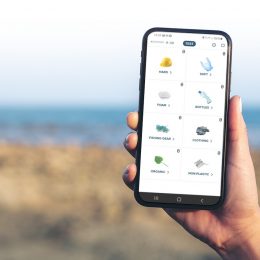
Contribute to science
Help enrich the data on the sources of ocean plastic pollution. Using the Citizen Science app, you can share valuable information from your nearest river or ocean.
-

Find out more
We must clean up what is already polluting our oceans and what is on its way via the top 1000 polluting rivers. Learn more about our technology and approach, or check our impact dashboard for our current catch numbers.
-
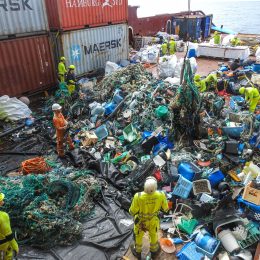
Fund the cleanup
As a non-profit, The Ocean Cleanup can clean up plastic in the ocean and on its way via rivers, thanks to your donations.


